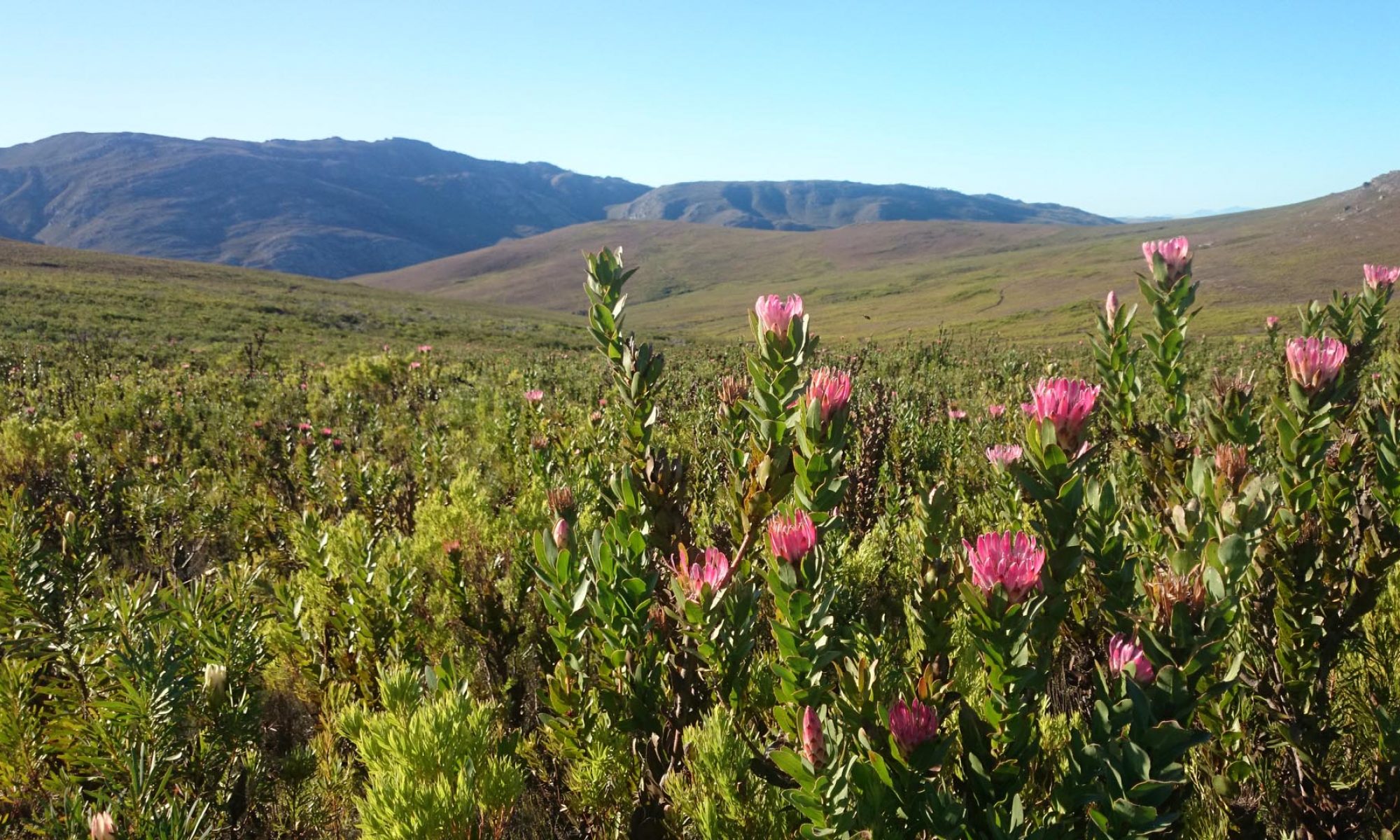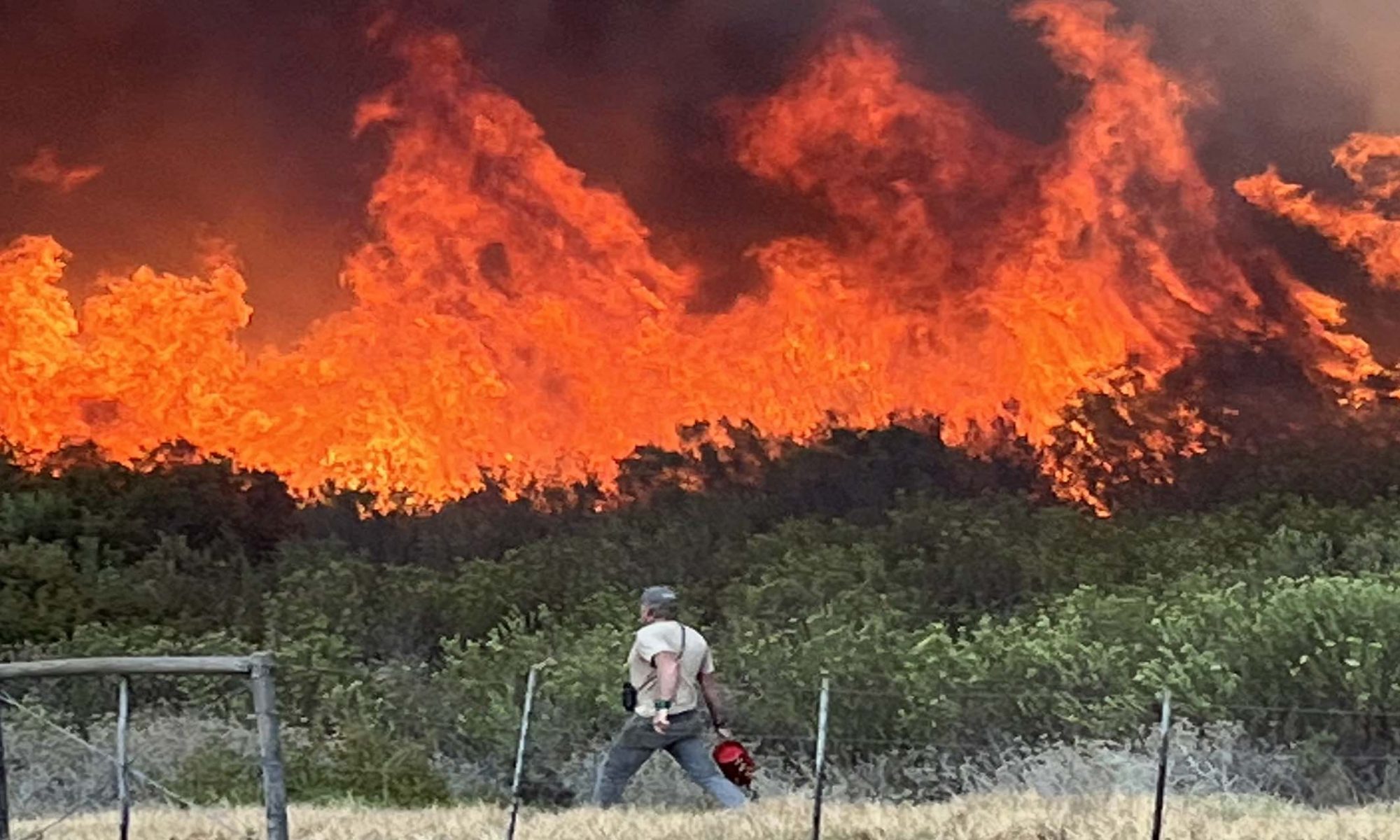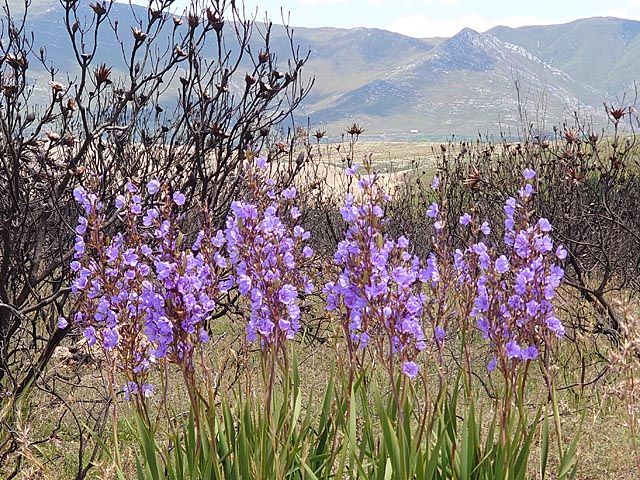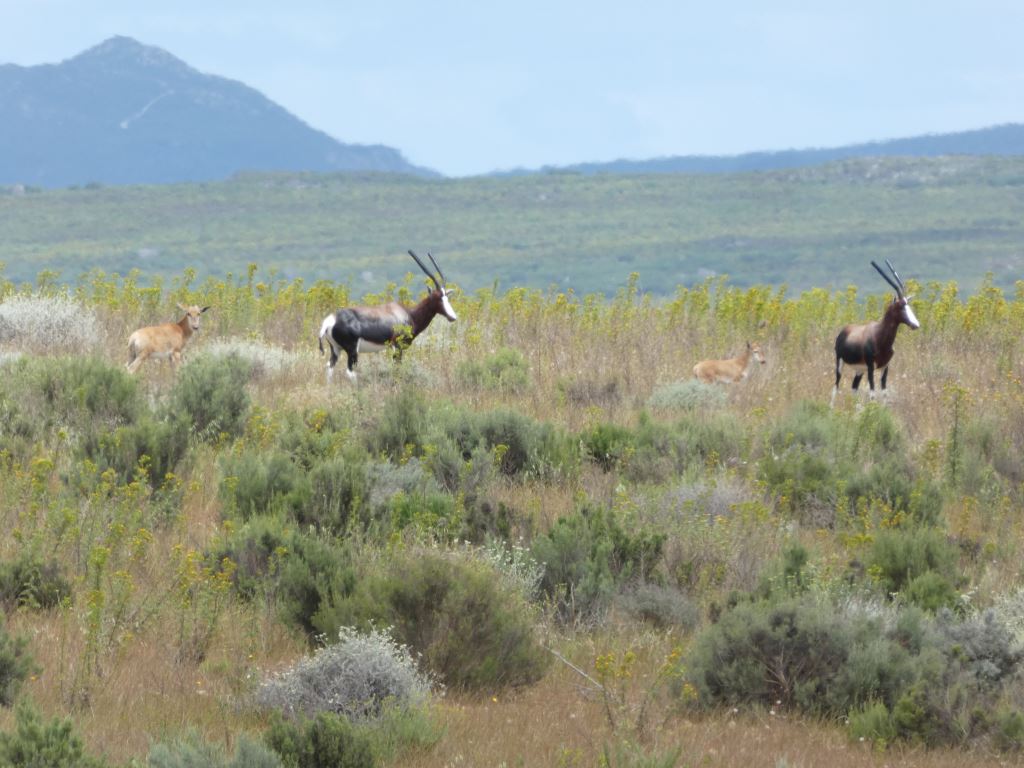Prof. Dr. Volkmar Wirth has devoted a detailed study to this area with regard to the lichen species found here. Many thanks for this interesting literature!
New signs

NEW signs on the public road that runs through the Sugarbird Nature Reserve

Major fire in the fynbos
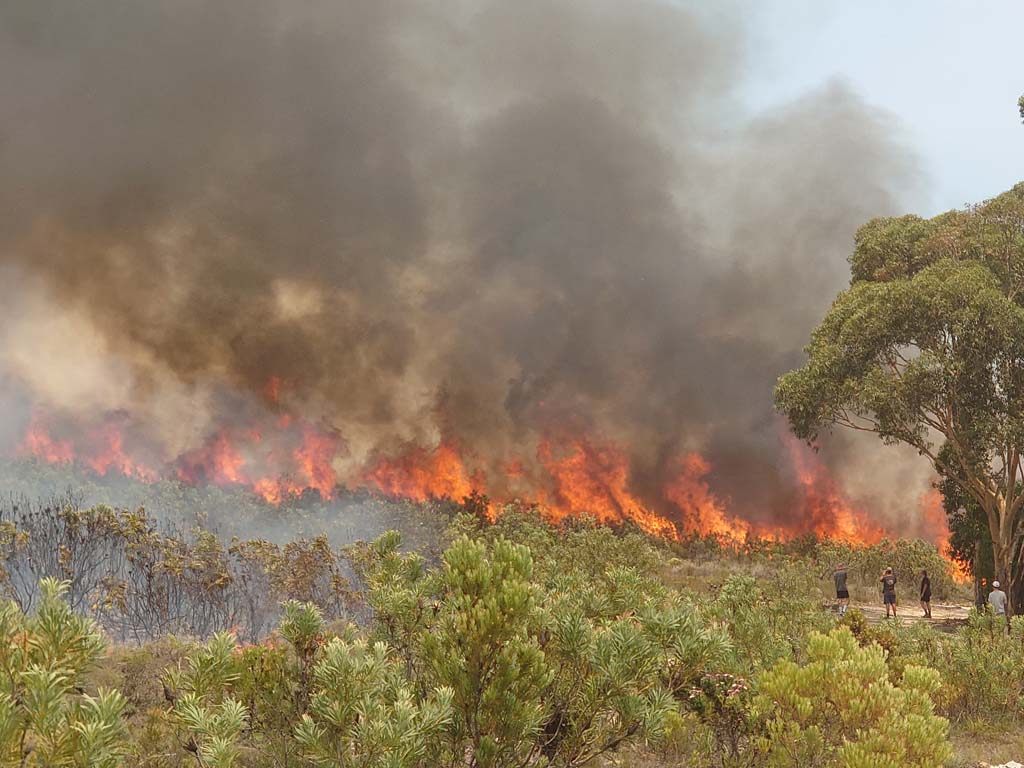
Shortly after 7 a.m., a small fire is reported about 3 kilometres as the crow flies from the houses at Lucerne Farm. A fairly strong north-easterly wind drives a first fire head up the 600 metre long hill, where Chris and Peter from the FYNBOS TRUST are the first to arrive after 30 minutes, but have to retreat immediately due to the masses of smoke and heat.
Although fire spreads much more slowly downhill than uphill, within 2 hours the fire had already spread through the 2 kilometre long adjoining valley. 15 year old tinder-dry fynbos developed an eerie blaze, the plume of smoke could still be seen at the Cape of Good Hope, 80 kilometres away as the crow flies. The fire spread not only downwind but also sideways, reaching the mountainous area of Beloftebos and threatening to jump across the district road into the Lucerne Farm Game Reserve. Helicopter intervention prevented this at the last second.
Many neighbours came to help with their fire engines, which was no fun in the 36 degree heat. In addition, highly equipped professional fire brigades from a radius of 100 km and 3 fire-fighting helicopters were constantly in action. ‘Work-For-Fire’ are specially trained “ground troops” who lay down counterfire in impassable terrain … Nothing fights fire better than fire!!! So we also secured the buildings of Lucerne Farm with counter-fires by burning the fynbos vegetation around these houses: just in time before the wind shifted in the afternoon and the fire burnt out in a northerly direction on the lines of our counter-fires.
The all-clear was only given at 5 p.m., all infrastructure could be saved, almost 700 hectares = 7 square kilometres of fynbos were burnt down.
What looks bleak at first is the start of a new growth cycle: the fynbos needs the fire, in just six months it will be green and blooming here. Unfortunately, hundreds of thousands of alien seeds will also be brought to life by the fire, so we will have a lot of work to do fighting aliens in the next 2-3 years.
Triage for the mountain regions
The Frankfurter Allgemeine Zeitung has published an article worth reading about introduced plants in South Africa, the associated threat to ecosystems and water supplies and the costly and necessary rescue efforts.
After the fire: a blaze of flowers!
The fynbos blossoms just a few months after the controlled fire. Here the approximately one metre high Aristea spiralis, a striking blue lily plant
Interview with our managing director
Our Managing Director Chris Martens was interviewed on the radio about ‘Invasive Plants’. Click HERE for the full interview
First Blue Crane chick of the season
First Blue Crane chick of the season spotted a few days ago. Not within our reserve, but very close by.
‘Our’ Blue Cranes are probably preparing their clutch on Field 1 just behind the main entrance, as they have been doing for the last two years. It is no coincidence that Blue Cranes are the national birds of South Africa. Their graceful dance in particular is a feast for the eyes.
First alpine swift sighted
Alpine swifts fly approximately 11,000km from Europe to South Africa for the winter. Sometimes large groups of them hunt for insects flying low over the fynbos of the reserve. A single guest today marked the start of this year’s alpine swift season.
6th Bonti calf born
Yesterday was the day. All Bontebok mothers have now given birth to their calves. The mothers of the youngest calves are always particularly shy and flee as soon as something unusual stirs hundreds of metres away. After 2-3 months, the escape distance decreases significantly because the young animals can already keep up at full speed in the event of a necessary escape.
The 5th Bontebok calf is here!!!
At the beginning of September 2020, 4 calves were discovered. Today the 5th was added. So the small herd of this rare antelope species is growing pleasingly
